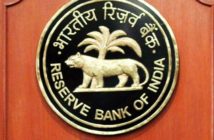The Interim Budget 2019-20 has pegged the fiscal deficit for the year 2019-20 at 3.4% of GDP. While presenting the Interim Budget 2019-20 in Parliament today, Union Minister for Finance, Corporate Affairs, Railways and Coal, Shri Piyush Goyal said, “The estimate of incomes and expenditure which I am presenting today, pegs the fiscal deficit of year 2019-20 at 3.4% of GDP.”
Shri Goyal said in his Speech, “We would have maintained fiscal deficit at 3.3% for year 2018-19 and taken further steps to consolidate fiscal deficit in year 2019-20. However, considering the need for income support to farmers, we have provided Rs. 20,000 crore in 2018-19 RE and Rs. 75,000 crore in 2019-20 BE. If we exclude this, the fiscal deficit would have been less than 3.3% for 2018-19 and less than 3.1% for year 2019-20.”
The Macro-Economic Framework Statement says that the Revenue deficit in 2018-19 was budgeted at Rs. 4,16,034 crore, 2.2 % of GDP. On the other hand, the Current Account Deficit widened to 2.7 % of GDP in first half of 2018-19 from 1.9 % of GDP in 2017-18, mainly on account of higher trade deficit arising from higher petroleum, oil and lubricants imports. Despite the marginal increase, the fiscal deficit to GDP ratio is well on track to achieve its target level of 3% of GDP.
The main focus of the ensuing year will be to improve the expenditure efficiency and improve tax collections to ensure that the economy moves back to the fiscal deficit path as mentioned in the Fiscal Responsibility & Budget Management (FRBM) Act, says the Medium Term Fiscal Policy cum Fiscal Policy Strategy Statement.
Further, the above document says that the Gross Tax Revenue of the Central Government is budgeted at Rs. 25,52,131 crore in BE 2019-20. This reflects a growth of Rs. 3,03,956 crore (13.5 %) over RE 2018-19. Direct taxes are expected to reach Rs. 13,80,000 crore in BE 2019-20 compared to Rs. 12,00,000 crore in RE 2018-19 indicating an increase of 15 % over RE. It is expected that direct taxes would be 6.6 % of GDP at the end of 2019-20. Indirect taxes are budgeted at Rs. 11,66,188 crore in BE 2019-20 showing an increase of 11.8 % over RE estimates (Rs. 10,42,833 crore). The increase is mainly on account of improvement in GST collections anticipated in 2019-20.
Non-tax revenue collections in 2019-20 is budgeted at Rs. 2,72,647 crore as compared to Rs.2,45,276 crore in RE 2018-19. This shows an increase of Rs.27,371 crore over RE 2018- 19, as per the Medium Term Fiscal Policy cum Fiscal Policy Strategy Statement.
The Finance Minister, in his Budget Speech, said that the total expenditure has reflected a high increase considering low inflation. It has risen by Rs. 3,26,965 crore or approximately 13.30%, from Rs. 24,57,235 crore in 2018-19 RE to Rs. 27,84,200 crore in 2019-20 BE. Further, 2018-19 RE figures have shown an increase over BE 2018-19 figures by Rs. 15,022 crore. The Capital Expenditure for 2019-20 BE is estimated to be Rs. 3,36,292 crore. The increase in total expenditure is on account of increased support to agricultural sector, interest payments and internal security, as per the ‘Budget at a Glance’ document.
In BE 2019-20, Centrally Sponsored Schemes (CSS) are proposed to be allocated Rs. 3,27,679 crore as against Rs. 3,04,849 crore in 2018-19 RE. Detailing further, Shri Goyal said in his Speech that allocation for National Education Mission is being increased from Rs. 32,334 crore in RE 2018-19 to Rs. 38,572 crore in BE 2019-20. Also, allocation for Integrated Child Development Scheme (ICDS) is being increased from Rs. 23,357 crore in RE 2018-19 to Rs. 27,584 crore in BE 2019-20.
“A substantial increase is proposed in the allocation for welfare of the Scheduled Castes and Scheduled Tribes”, said Shri Goyal. The allocation of Rs. 56,619 crore made in BE of 2018-19 for Scheduled Caste, further increased to Rs. 62,474 crore in RE is proposed to be enhanced to Rs. 76,801 crore in BE for 2019-20, an increase of 35.6% over BE of 2018-19. For the Scheduled Tribes also, proposed allocation in 2019-20 BE is Rs. 50,086 crore as against Rs. 39,135 crore in BE 2018-19, an increase of 28%.
Regarding Disinvestment proceeds, the Government is confident of crossing the target of Rs. 80,000 crore this year and have kept a target of Rs. 90,000 crore in BE 2019-20, as per the ‘Budget at a Glance’ document. Shri Goyal said in his Speech, “We have pursued the public enterprises asset management agenda to make these enterprises accountable to the people. As many as 57 CPSEs are now listed with total market capitalisation of over Rs. 13 lakh crore. The Government received over Rs. 1 lakh crore from disinvestment proceeds during 2017-18.”
As per the Medium Term Fiscal Policy cum Fiscal Policy Strategy Statement, Non-Debt capital receipts on capital side are expected to be Rs.1,02,508 crore in BE 2019-20 indicating an increase of Rs. 9,353 crore over RE 2018-19. Increase in non-debt capital receipts is mostly on account of disinvestment which is budgeted at Rs.90,000 crore (RE 2018-19 – Rs. 80,000 crore). Total net borrowings in 2019-20 are projected at Rs.7,03,999 crore as compared to Rs.6,34,398 crore in RE 2018-19. This reflects an increase of 11 % over RE.
The Government had promised last year that it would carry out reforms in stamp duty levied and collected on financial securities transactions. Shri Goyal said in his Speech, “I am proposing, through the Finance Bill, necessary amendments in this regard. The amendments proposed would usher in a very streamlined system. Stamp duties would be levied on one instrument relating to one transaction and get collected at one place through the Stock Exchanges. The duty so collected will be shared with the State Governments seamlessly on the basis of domicile of buying client.”
While giving a vision for fiscal consolidation, Shri Goyal said in his Speech, “We have maintained the glide path towards our target of 3% of fiscal deficit to be achieved by 2020-21”. The Government will now focus on Debt consolidation along with completion of the fiscal deficit consolidation programme. India’s Debt to GDP ratio was 46.5% in year 2017-18. The FRBM Act prescribes that the Debt to GDP ratio of the Government of India should be brought down to 40% by 2024-25, the Minister added.
The table below provides the estimates of fiscal performance against specified fiscal indicators during RE 2018-19 and BE 2019-20 and projections for 2020- 21 and 2021-22.
Fiscal Indicators – Rolling Targets as a Percentage of GDP






